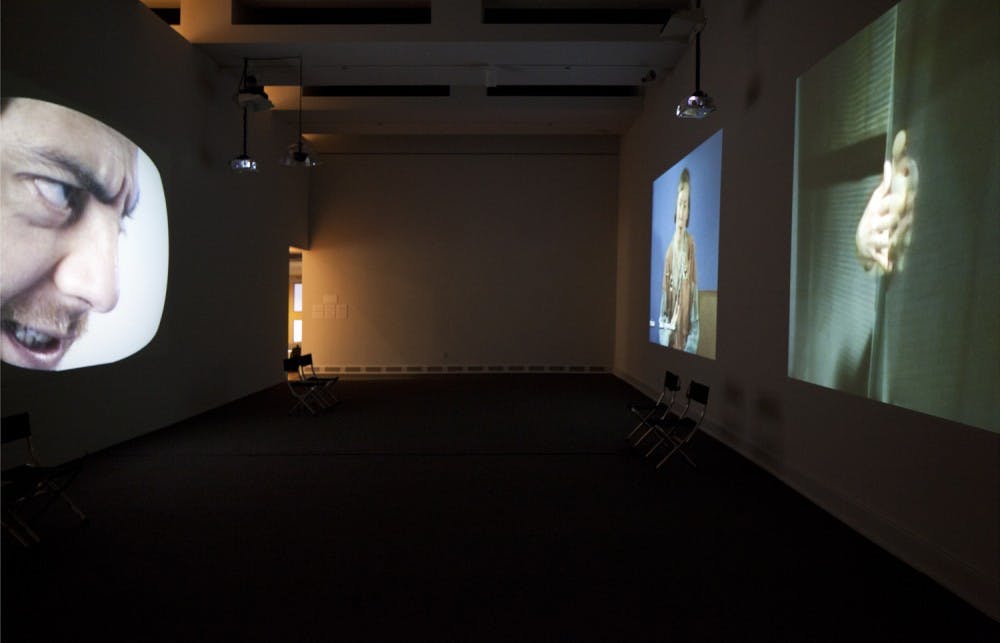With my class canceled Tuesday morning, I decided to make a visit to the ASU Art Museum to see Diablo, the six-and-a-half foot anaconda being housed for the exhibition of Juan Downey: The Invisible Architect, a retrospective that traces Downey’s three decades of production. Deborah Susser, an adjunct faculty in the School of Art, writer, and editor, offered to give me a tour through the three-floor display, both to explain the Chilean multimedia artist’s concepts and also to help me if any snake-wrangling was needed. (Just kidding. Diablo seems very content in his enclosed living situation.)
Originally trained as an architect, Chilean artist Downey developed the theory of “invisible architecture” to describe the building energy that connects people and things that releases their essential life flow. As Downey described, the true invisible architect “becomes one with energy and manipulates the wave material.” To physically represent his ideas, Downey merged ideas that had traditionally been divided. Video, art, and architecture had been seen as separate, but his cross-pollinating trains of thought brought these together.
During the visit, Susser described that Downey was most interested in forces that can’t be seen, which made many of his ideas precursors of current preoccupations. He was also concerned with cultural and geographic identity, and more specifically, he was curious about how his surroundings shaped him and others and how could he synthesize these influences.
On the second floor of the exhibit, we looked at Video Trans Americas, which displays 14 channels in seven pairs that chronicle Downey’s extensive travels. Believing that people were isolated from each other, the self-described “cultural communicant” and “activating anthropologist” bridged communities by relaying his videos of previous travels to those in remote areas.
In the same room are his geographic drawings and paintings that were surprisingly done in a scientific and accurate measure (well, for a 1970s art piece). What stood out to me was that even though they were depicted very exactly, they also had a creative twist with patterned lines that start from centered spots on the canvas. Knowing how important geographic identity was to Downey, I thought about how energy radiates from a central location. Or perhaps the lines resemble fingerprints, relating to Downey’s concept about the self? If you go, let me know what you think. Sussser pointed out to me, “By mapping things that aren’t mappable, Downey was able to show precise but also loose depictions of the world.”
[gallery link="file" order="DESC"]
And finally, Susser and I paid a visit to Diablo. On the third floor is Anaconda Map of Chile (1973), a wooden structure that encases a drawn map of Chile, the snake, and a water receptacle.Downey originally intended for the piece to include a live anaconda, the iconic South American reptile, when the piece was first displayed at the Center for Inter-American Relations in New York. However, hours before the piece was to be shown, the anaconda was pulled from the feature. Downey attached a plaque next to the piece that read, “Today I was ordered to remove an anaconda from my work of art.”
It was quite a process for the ASU Art Museum to be granted permission to feature Diablo, but it was well worth the effort. The museum here is the first venue in the United States to feature the anaconda with the piece.
The consciousness-raising exhibition continues until Dec. 31, and if it’s not obvious, I recommend that you go see it. It’s definitely a trip in the geographic, artistic, and colloquial sense.
If you have any suggestions for what I should check out next, email me at Mary.G.Richardson@asu.edu or follow me on Twitter at MG_Richardson.




